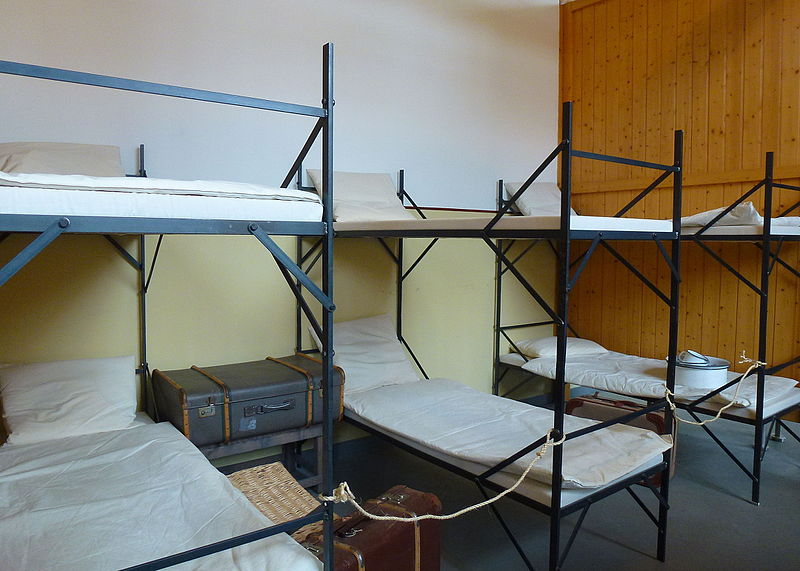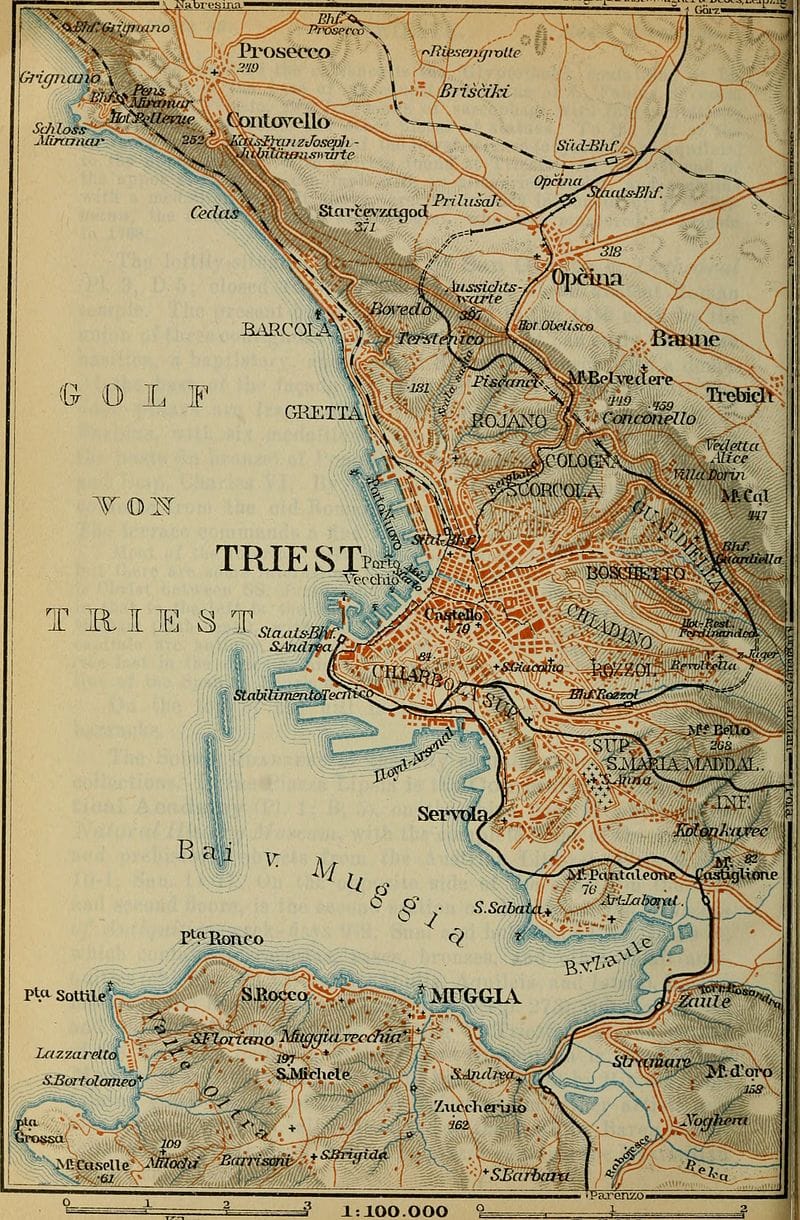| Shoa Memoral Wall >> |
Leaving Vienna via Triest
Leaving family, home and maybe a job behind to travel into an unknown country was a big decision from the start. How did Austrians leave, which route did they take? Obviously, Austria today is a land-locked country, but during the main waves of emigration she still had access to the Mediterranean, to naval ports like Triest or Pula in today's North-Eastern Italy and Eastern Croatia respectively.
Austrian emigration did not start on a large scale until the 1880s, peaking only after the turn of the century, whereas millions of Germans had already reached the US East Coast, also English and Irish emigration had peaked decades earlier. This gave the harbours of Hamburg and Bremen a huge head start in developing the emigration business.
As the emigration bug started spreading throughout the Austro-Hungarian monarchy, Lloyds or HAPAG ticket offices started popping up wherever poverty and lack of opportunities made the "Land of unlimited opportunities" sound irresistible. Cities like Lemberg, Czernowitz or Cracow were particularly targeted, also the poverty-stricken rural areas of western Hungary along the border to Austria and Hungary where salesmen kept promising streets of gold.
Ticket prices per person corresponded roughly to a worker’s monthly wage and included the train ride to the city of disembarkation. As this was often too much for a whole family, the men would leave first to make enough money for the rest of the family to join them.
Arriving in Hamburg the emigrants were brought to BallinnStadt, where bricked barracks in typical North German style were large enough to accommodate 5.000 travellers at one time, even separated by nationality and religion, to be prepared for departure.
Although Triest was already well connected with Vienna and Budapest by rail, Triest lagged
behind when it came to the international emigration market. It was only by 1904 that the "Austro-Americana" company - originally specialising in cargo shipping of cotton - decided to start passenger transport to North and South America, as well as other parts of the world.
In 1901, the train ride from Vienna leaving from the beautiful Südbahnhof (South Railway Station) took 12 hours 10 minutes. Austro-Americana offered a choice of either a night or a day ride. Arriving in Triest most emigrants would see and smell the sea for the first time. They were picked up from the train station by company agents and taken to a near-by former children's hospital that could hold up to 800 people.
Surrounded by a garden, the building was easy to be guarded by officials and was well run: there were separate dormitories for women and men, food was served in two huge dining halls and
everything was prepared for the last checks: the day before departure the medical checks were carried out in the in-house wards. No shipping company wanted to risk transporting sick passengers that could spread contagious diseases, endanger the whole ship and delay the travel schedule (in 1911 the death of a female cholera passenger caused a two-week quarantine in a safe distance from Triest).
Another reason for a thorough exam was that sick immigrants were rejected at their destinations (like Ellis Island) and the Austro-Americana would have had to cover the extra costs.
Following the medical exam the information of each passenger was listed in detail - manifests that everyone researching their families loves as it gives lovely information.
As soon as the emigration candidates were cleared for the journey they were brought to the ship where another separation would take place, though this time it was a financial separation between passengers 1st, 2nd or 3rd class. The crossing to New York took 15 to 18 days while crossing to Buenos Aires (via Rio de Janeiro) took 25 to 28 days.
As history has shown, not everyone found their promised land and decided to return home. Between 1908 and 1913 (WWI brought an abrupt end to emigration and would only be rekindled in the early 1920s) 35% of the emigrants from the Austro-Hungarian empire would later take the long journey back to their former home land.
© 2020 Vienna Heritage Tours / Kerstin Timmermann








